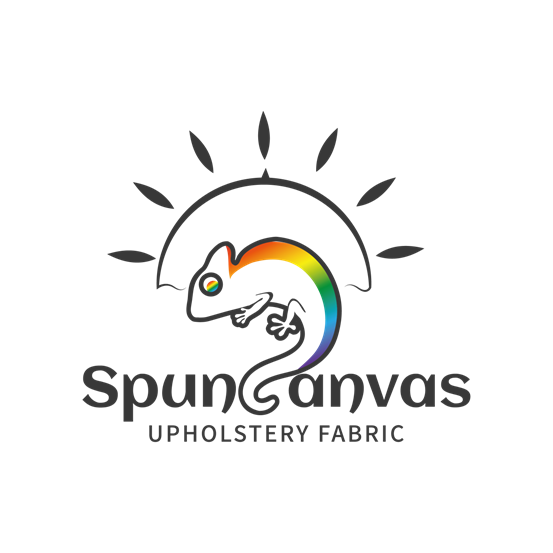Sunbrella has long been a market leader in the outdoor home and shade sector, thanks to its superior weathering and UV resistance, as well as its eco-friendly philosophy. However, with advances in textile technology, emerging brands such as Spuncrylic have introduced a variety of products that match or exceed the performance of traditional high-end fabrics through innovative materials and processes. This article will focus on analysing the core characteristics of Spuncrylic's four outdoor fabrics (Acrylic, Polyester, Spunpoly, Olefin), exploring their potential as alternatives to Sunbrella, and providing consumers with a scientific guide to choosing the right material.
I. Sunbrella's Core Advantages and Industry Challenges
Sunbrella's success stems from its in-situ colouring process and sustainable concept, which achieves long-lasting colour fastness (5-year warranty), UV resistance (UPF>50), and low environmental load by uniformly integrating the dyes into the fibres. However, its high cost and market monopoly have prompted the industry to seek more cost-effective alternatives. In recent years, consumer demand for eco-friendly, versatile and lightweight fabrics has surged, pushing companies to develop new synthetic fibres and blending technologies.
Comparison of four Spuncrylic fabrics and their substitution potential
1. Acrylic: the outdoor innovation of synthetic wool
- Characteristics: Acrylic is known for its soft touch and high warmth of ‘artificial wool’, as well as excellent light resistance (colour fastness 1500 hours) and UV resistance. With a width of 1.5 metres and a weight of 260-280g/m², Spuncrylic's Acrylic fabrics combine fluffiness with durability, making them ideal for outdoor sofas, awnings and other situations that require frequent exposure to the sun.
- Advantage: Acid and alkali corrosion resistance, insect moth resistance, and the cost is lower than natural wool, suitable for consumers who pursue cost-effective.
- Limitations: prone to static electricity, need to optimise the process through anti-static agents.
2. Polyester: High colour fastness and sun protection benchmark
- Characteristics: Spuncrylic's Polyester has a colour fastness of 2,000 hours, the highest of the four materials, and a lighter weight of 230-250g/m². Polyester has an inherently high density fibre structure, excellent UV resistance (UPF values easily reach 40+), and is wrinkle resistant and shape retentive.
- Applications: Suitable for outdoor parasols and sails that are exposed to strong UV rays for a long period of time, and its fast drying characteristics (refer to the quick-drying technology of titanium fibre imitation cotton fabrics) can reduce the risk of mould and mildew in humid environments.
- Environmentally friendly: Polyester can be recycled, which is in line with the trend of circular economy, but the energy consumption in the production process needs to be optimised through technological upgrading.
3. Spunpoly (spunbonded polyester): an economical choice for balanced performance
- Characteristics: colour fastness 1000-1500 hours, grammage similar to Polyester, but the fibres are spunbonded to enhance abrasion resistance. Its UV resistance is slightly inferior to the first two, but at a lower cost, it is suitable for short-term outdoor use or projects with a limited budget.
- Scenarios: Temporary tents, picnic mats and other lightweight needs scenarios, with sunscreen coating can further enhance the protection.
4. Olefin (polyolefin): the ultimate in weather resistance and lightweight
- Features: Grammage is only 200-220g/m², colour fastness 800-1000 hours, the lightest fabric of the four. Olefin fibres are resistant to humidity and chemical corrosion, making it suitable for outdoor furniture on the seaside or in high humidity areas.
- Limitations: low colour fastness, easy to fade in long term exposure, need regular maintenance or use in non-focused visual areas.
III. Suggested Scientific Options for Alternatives
1. High UV Protection Scenarios: Prefer Polyester (colour fastness 2000 hrs) or Acrylic (1500 hrs), both of which provide long-lasting sun protection through high-density fibres with UV inhibitors, comparable to the durability of Sunbrella.
2. Lightweight and cost-sensitive scenarios: Spunpoly and Olefin offer economical options and are recommended for use with shade coatings or for short-term projects.
3. environmental protection needs: focus on the recycling potential of fabrics (e.g. Polyester) and fluorine-free processes (refer to the environmental concept of titanium fibre imitation cotton fabrics) to reduce the use of harmful substances such as PFAS.
Future Trend: Integration of Technology and Sustainability
If Spuncrylic wants to further replace Sunbrella, it needs to learn from its original colouring process and quality assurance system, and at the same time strengthen the intelligent production (such as the automation upgrade of Glen Raven mentioned in webpage 3). In addition, combining ‘hard sun protection’ market needs (e.g., high UPF certification) with functional and fashionable designs will accelerate the brand's rise in the outdoor blue ocean market.
Conclusion
Sunbrella's position in the industry is hard to shake, but Spuncrylic provides consumers with multiple alternatives through differentiated material combinations and technological innovations. Whether it is Polyester, which pursues the ultimate weather resistance, or Acrylic, which is the most cost-effective, scientific material selection and scenario-based application will become the core of outdoor fabric decision-making. In the future, the in-depth integration of environmental protection and science and technology will surely drive this field to a new level of sustainability.



